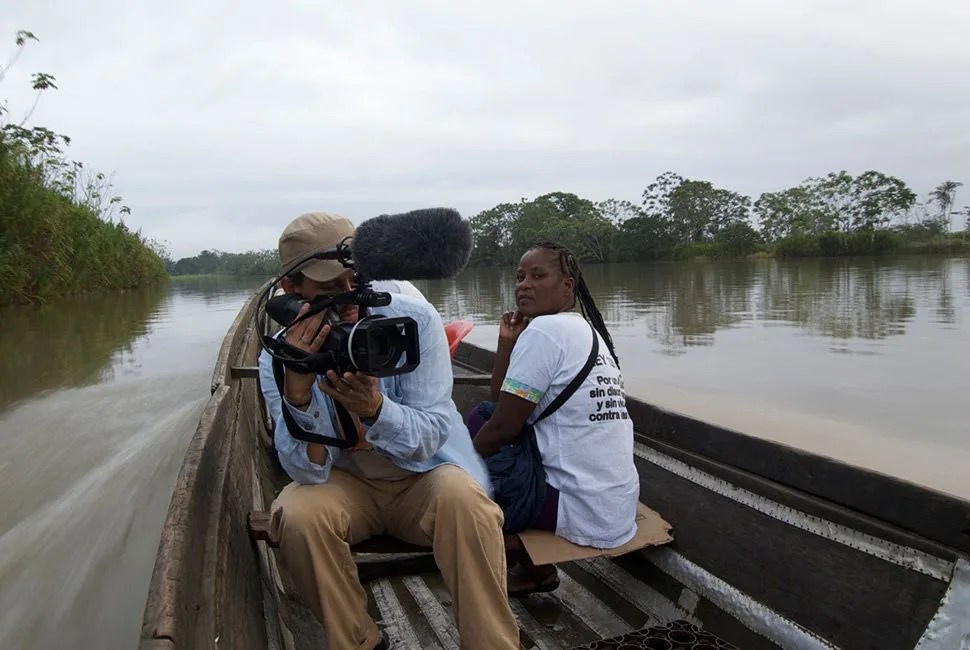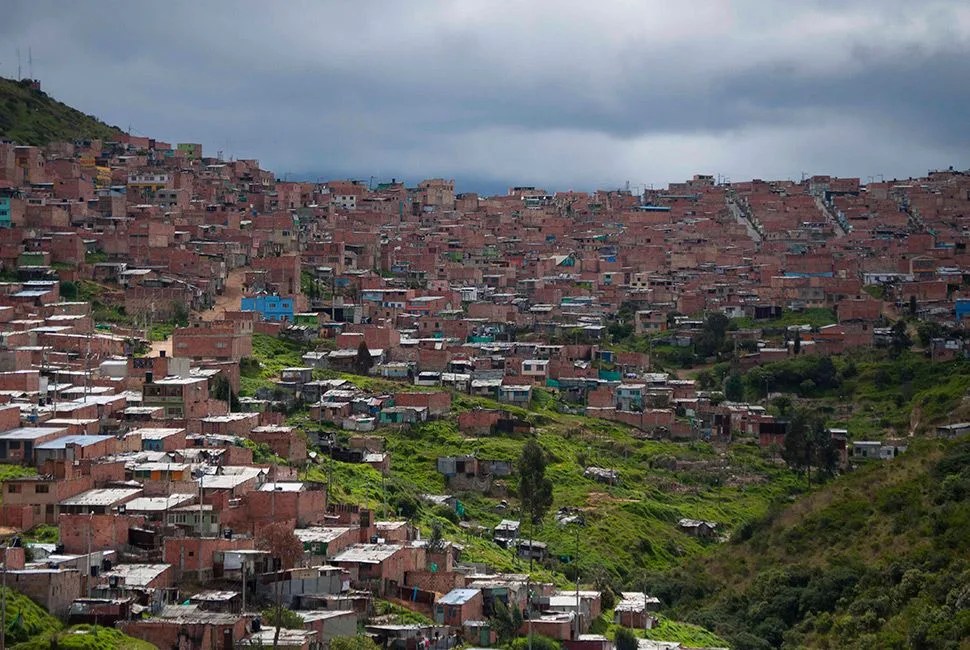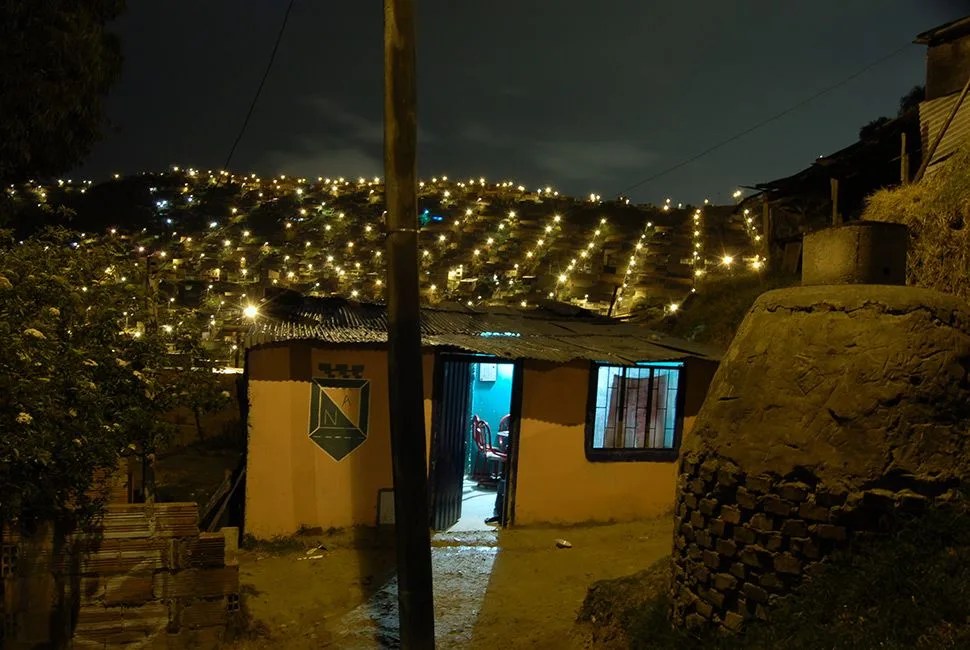From Issue Two of the Gear Patrol Magazine. Free shipping + 15% off in the GP store for new subscribers.
Bogotá’s economic disparity spreads from the southeast side of the city like a rash, climbing up the hillside of Ciudad Bolívar. The higher you go, the more primitive — and desperate — life is. This is where the victims of Colombia’s displacement gather — the peasants, indigenous groups, Afro-Colombians. A short bus ride from the polished glass of Bogotá’s financial district and the serpentine affluent neighborhoods of the Andean foothills, it stands as a stark statement of a country entrenched in dichotomy. Juan Mejia Botero, a documentary filmmaker born in Bogotá, has spent the last decade of his life recording the stories of the marginalized and voiceless of the capital city.
Mejia is the founder and social documentary director for the production company Human Pictures. He started his work on The Battle for Land in the slums of Bogotá in 2002, partnering with AFRODES, the National Association of Displaced Afro-Colombians. The film, shot between 2008 and 2012 and expected to be released in 2016, follows people fleeing the lands of Colombia’s Pacific coast to slums like Bogotá’s Ciudad Bolívar and the neighboring Altos de Cazucá in Soacha. Mejia believes that before the world jumps to the conclusion that Colombia is now a glimmering, reborn nation, there needs to be a straightforward look at the reality of many of its impoverished citizens — those living on the periphery of the urban and rural areas as well as the periphery of Colombia’s conscience.
“I love Colombia, and Colombia is a very beautiful country, and I’m very happy that people are seeing that,” Mejia said. “And I’m happy that people are coming, and I’m happy that we are shedding our Pablo Escobar skin. But the fact of the matter is, there are two Colombias.”
I spoke with Mejia in New York City, where he is finishing the theatrical cut of The Battle for Land. He showed me the academic cut of the film, which had just won a 2016 Honesty Oscar for Best Picture. The 90-minute documentary is part animation, part live recordings of people’s stories, told in the rural lands from which they fled and in the slums where many migrants now reside.
When I visited Bogotá, I dallied through the comfortable side of the city, the new darling of tourism and travel media. I stayed in the polished parts — the places of culinary revival, the places experiencing stability as the longest civil war in the Western Hemisphere nears resolution. But despite this veneer of prosperity, there is another, deeply corroded side of the Colombian coin.
“You go to Bogotá and you stay in la Zona Rosa, la Zona T, la Zona G, and you’re like, ‘Colombia is growing, Colombia is flourishing, look at this, this is incredible,’” Mejia said. “But you just — I mean, it’s not far. You just go a few blocks one way or a few blocks the other way, and life is different.”



